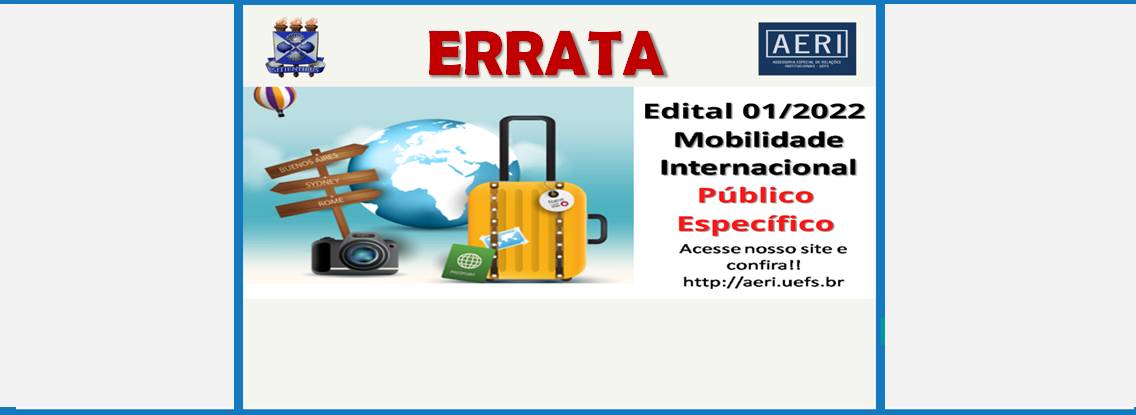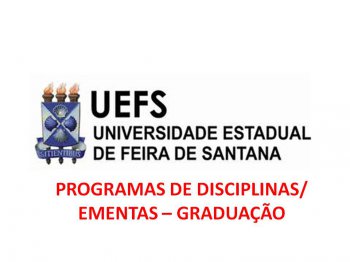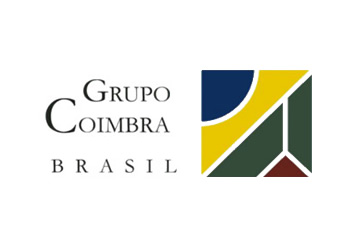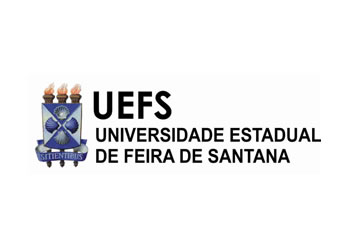English
The State University of Feira de Santana (UEFS – Universidade Estadual de Feira de Santana) will, through its Management Program (2007-2011), take actions geared toward the construction of an autonomous university, which is a social and democratic reference. One of the most significant goals of this program is to consolidate UEFS as a space for production and socialization of knowledge.
Within this new model of management, we created, in May of 2007, the Assessoria Especial de Relações Institucionais – AERI – (Special Advisory of Institutional Relations) with the aim to promote institutional actions, make feasible the technical scientific activities already installed and act in the development of new actions that will project UEFS in the national and international scientific scenario. In this sense, student and faculty mobility has special notability.
In parallel, AERI also took over the role to promote fund raising which, added to the budget, would enable the fomentation of demands that had been repressed up to now, such as the enlargement of the infrastructure both praedial and that of the digital technology system, acquisition of equipment, and expansion of the activities on the campi of Lençóis and Santo Amaro.
In order to play this role, AERI has established a permanent channel of communication with government institutions, NGOs, and businesses within the public and private sectors, as well as national and international educational institutions. Internally, it maintains contact with the University Community through the departments, deans’ offices, administrative centers and sectors, seeking its effective participation in the construction of a university based on democracy and inclusive adding knowledge. The sustainability of this profile is in the valorization of cultural diversity and the strengthening of scientific, technological and innovation base.
Stages related to the Process of Requesting Student Exchange
1. Student’s responsibility:
1.1. Identify the Higher Education Institution (HEI) of his interest, but without signing up for the exchange programs on his own, for this initial contact should be done through AERI;
1.2. Establish contact with the HEI and verify the pertinence and feasibility of doing the exchange (for example: curricular compatibility, exemption of school taxes, food and board/housing for relocation students, etc.);
1.3. Meet the set requirements of Resolution CONSEPE 39/2001; baring in mind the elaboration of the Work Plan. This work plan should be sent to AERI, along with the following forms, dully filled out – Letter of Recommendation from Professor of UEFS, Initial Registration Form and Subjects’ Compatibility Form – these and the other forms can be downloaded here. The Work Plan consists of a text to be elaborated by the candidate to the Relocation Program, and should contain Objective, where in the candidate will explain what made him pick the chosen university, making clear the importance of the exchange for the improvement of both his personal and professional training. Justification, wherein it is necessary to justify having chosen the hosting institution and its respective country – with the given time to take care of all the paperwork;
2. AERI’s responsibility:
2.1. Provide the student all information necessary for the relocation;
2.2. Forward the respective Collegiate the request filer;
2.3. Follow up on the procedures with the Collegiate;
2.4. Once it is GRANTED by the collegiate, the AERI will forward to the HEI the file for consideration of the filer’s request, following and providing all clarifications related to the relocation of the student;
2.5. Once it is GRANTED by the HEI chosen, the AERI will officially dismissal of the student from the PROGRAD and the DAA, as well as follow up on his registration at the hosting HEI.
3. Student’s responsibility:
3.1. After granting of the student’s request, he himself must take care of all travel arrangements such as air tickets, passport, visa and health insurance as well as other documents required by the hosting country or institution;
3.2. In his return, the student will have to forward all required paperwork of the Resolution CONSEPE 39/2001 to the PROGRAD for the purpose of equivalency of studies, as well as a report of activities developed, to the AERI.
Here we make available documents of interest both for UEFS faculty and students who are interested in exchange activities.
Resolution CONSAD 08/2007, which creates the Institutional Program of Exchange Scholarship of UEFS.
Resolution CONSEPE 39/2001, which regulates the dismissal and equivalency of studies done by students at the undergraduate level in academic exchange programs at foreign and national institutions.
Ordinance nº 0861/2007, which regulates the Institutional Program of Exchange Scholarship of UEFS.
Many organizations find themselves limited in their capacity of acting due to budget limitations that escape the strategic planning and result in the discontinuation of programmed projects and actions. In the contemporaneous world, raising extra-budget funds is necessary for the expansion required in the multiple institutional attributions. Raising or mobilization of funds is a term used to describe a range of activities for the generation of resources, in support of the most diverse organizations, including the higher education ones.
Among the main sources of funds the following ones can be pointed out:
Government funds;
Income generated by the providing of services;
Funds raised through donations (of individuals, businesses or institutions).
Obtaining funds from government sources by AERI is done in three acting units:
The awareness of parliament members toward pointing out individual and workbench amendments to the budget of the country, and support to priority projects that seek to improve the infrastructure of UEFS and Student Assistance;
Attaining pacts and partnerships in order to act in the fields of research, teaching and continuing education; as well as the betterment of the infrastructure of labs;
Submission of proposal in response to public edicts and invitation letters, also in support of research, teaching and continuing education.
The Projects’ Desk of AERI aims to support projects through the raising of extra-budget funds ant the increase of cooperation by means of pacts and partnerships. Besides, the project desk works as a space for information on existing projects at UEFS that need support in order to be carried out.
AERI elaborated a document with guidelines to help in the development of projects of this nature, whose files can be accessed here. The departments and researchers who wish to send in their projects can look for AERI or send a copy. The first measures to change into what is known today as Feira de Santana started with the creation of the village on the 13th of November of 1832. The municipality and the village were created on the 9th of May of 1833, with the denomination of the Vila Arraial de Feira de Sant’Anna, with the dismembered territory of Cachoeira, made up by the vicinities of São José das Itapororocas (headquarters), Sagrado Coração de Jesus do Perdão and Santana do Camisão, currently the Municipality of Ipirá.
The installation of the municipality occurred on the 18th of September of the same year, when the first councilmen were sworn, namely, Captain Manoel da Paixão Bacellar e Castro – first president, reverends Luiz José Antonio Manoel Vitorino and Antonio Manoel Paulino Nascimento, Captain Joaquim José Pedreira Mangabeira and Joaquim Caribé Meretova. The first intendment since the Proclamation of the Republic was Joaquim de Melo Sampaio.
The provincial law nº 1.320 of the 16th of June of 1873 elevated the town to the category of city. Since then, it started to be called Cidade Comercial de Feira de Santana (Commercial City of Feira de Santana). The state decrees 7.455 and 7.479, from the 23rd of June and 8th of August of 1931, respectively, simplified the name to Feira. The state decree nº 11.089 of the 30th of November of 1938 made official the denomination of municipality: Feira de Santana.
The city was named in honor of its so-called founders. In the XVIIIth century, the couple Domingos Barbosa de Araújo and Anna Brandoa built a chapel on the Sant’Anna dos Olhos D’Água Farm, in honor of his holy devotion, Our lady of Sant’Anna.
A new mandatory troop stop was born there for travelers and drovers coming from the hinterland of Bahia and other states on their way to the Port of Cachoeira, the most important town of Bahia then. There was an increasingly prosperous trade in cattle there, along with a periodic open market.
The increasing development pace of the town required the construction of wide streets, where they began to install stores in large scale, in order to meet the demands of the population that grew along with the arrival of Brazilians and foreigners who adopted Feira de Santana as their home.
This accelerated pace of growth led the people to demand the creation of the municipality. It was the birth of that what would become the second largest city in the state and the 31st one in the country as it had a knack for attracting people from all over the country due to its geographic location, as the junction that joins the country and the hospitality of its people.
(*) PROGRAD –Undergraduate Studies Deans’ Offices
(*) DAA – Division of Academic Affairs














